Northen Suburbs Branch, July 2018
It was very pleasing to have four new faces on our walk, including two who saw the event on Meetup.
Due to the possibility of a storm in the late morning/early afternoon we adjusted the walk to include an option of a one-way, downhill excursion with a vehicle stationed at the end for transport back to the beginning.
The arm of Candlewood Park leading to Blue Mountain Lake is only 500m in length and 50m wide, yet it contains a very high number of species of plants and trees.
One of the first things to catch our eye was a very large Cockies Tongue (Templetonia retusa). In this area these plants usually grow to about one metre—this one was closer to four metres.
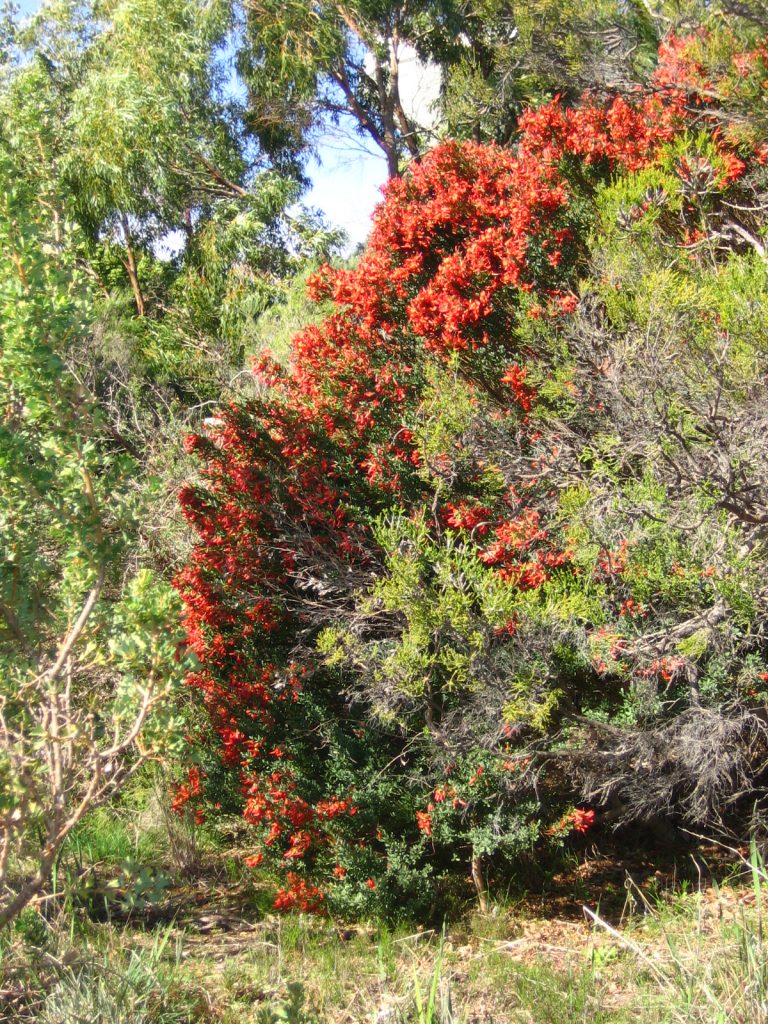
Cockies Tongue (Templetonia retusa) Don Poynton 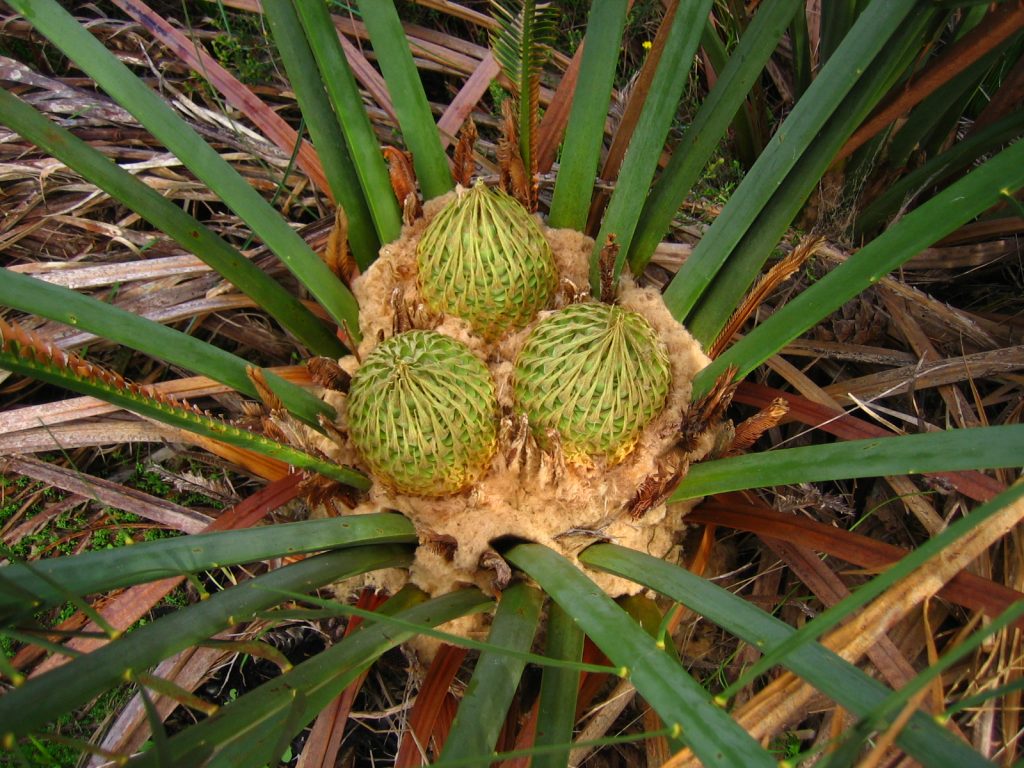
Sandplain Macrozamias (Macrozamia fraseri) Don Poynton
Further on we came upon a variety of trees and tall shrubs, no doubt representative of the bushland that had been cleared for housing on either side of the park. These included three Banksias (Banksia attenuata, B. grandis and B. menziesii), Jarrah, Marri, Common Sheoak (Allocasuarina fraseriana) both sexes of Dwarf Sheoak (Allocasuranina humulis), with the female in flower, Jacksonia species, Balga and Macrozamia.
Sandplain Macrozamias (Macrozamia fraseri) were abundant; both male and female plants bearing cones were found, although there was some debate as to which we were looking at, at some stops.
Most plants were just coming into flower including numerous Cottonheads with the Grey Cottonhead (Conostylis candicans) being much more prevalent than Prickly Conostylis (C. aculeata) and Bristly Cottonhead (C. setigera).
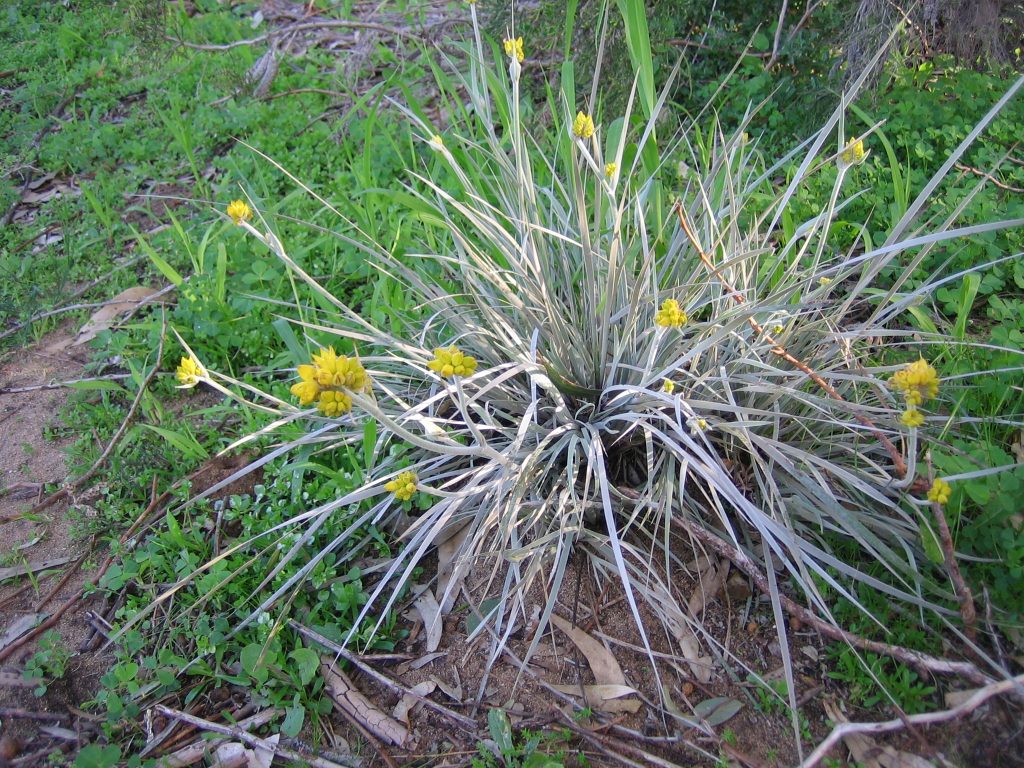
Grey Cottonhead (Conostylis candicans) Don Poynton 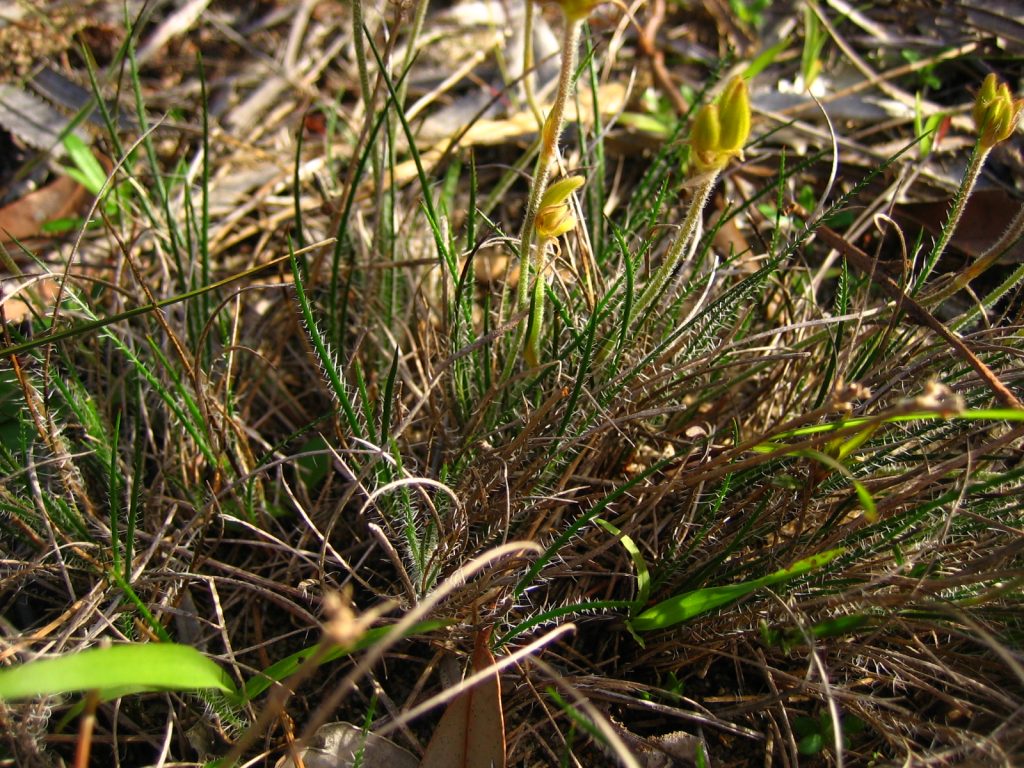
Bristly Cottonhead (Conostylis setigera) Don Poynton
Other plants in flower included Grey Scaevola (Scaevola canescens), Common Hovea (Hovea trisperma), Native Wisteria (Harbenbergia comptoniania) and Yellow Buttercup (Hibbertia hypericoides).
The recent rain ensured plenty of fungi with a wide range of types and species. Due to the ever-present threat of rain it was decided not to spend time trying to identify each species using our guide book. However a few obvious ones were: Slender Coral (Ramaria gracilis), Scarlet Bracket (Trametes coccinea), Scotsman’s Beard (Calocera guepiniodes) and Strawberry Slime Mould (Tubifera ferruginosa)
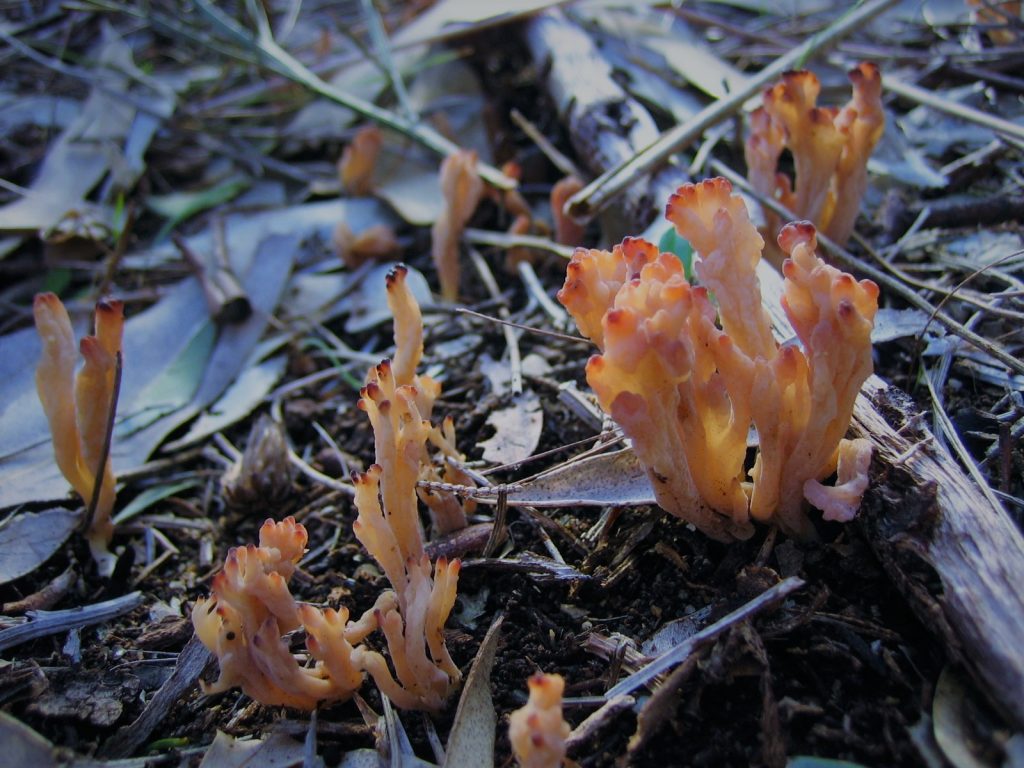
Slender Coral (Ramaria gracilis) Don Poynton 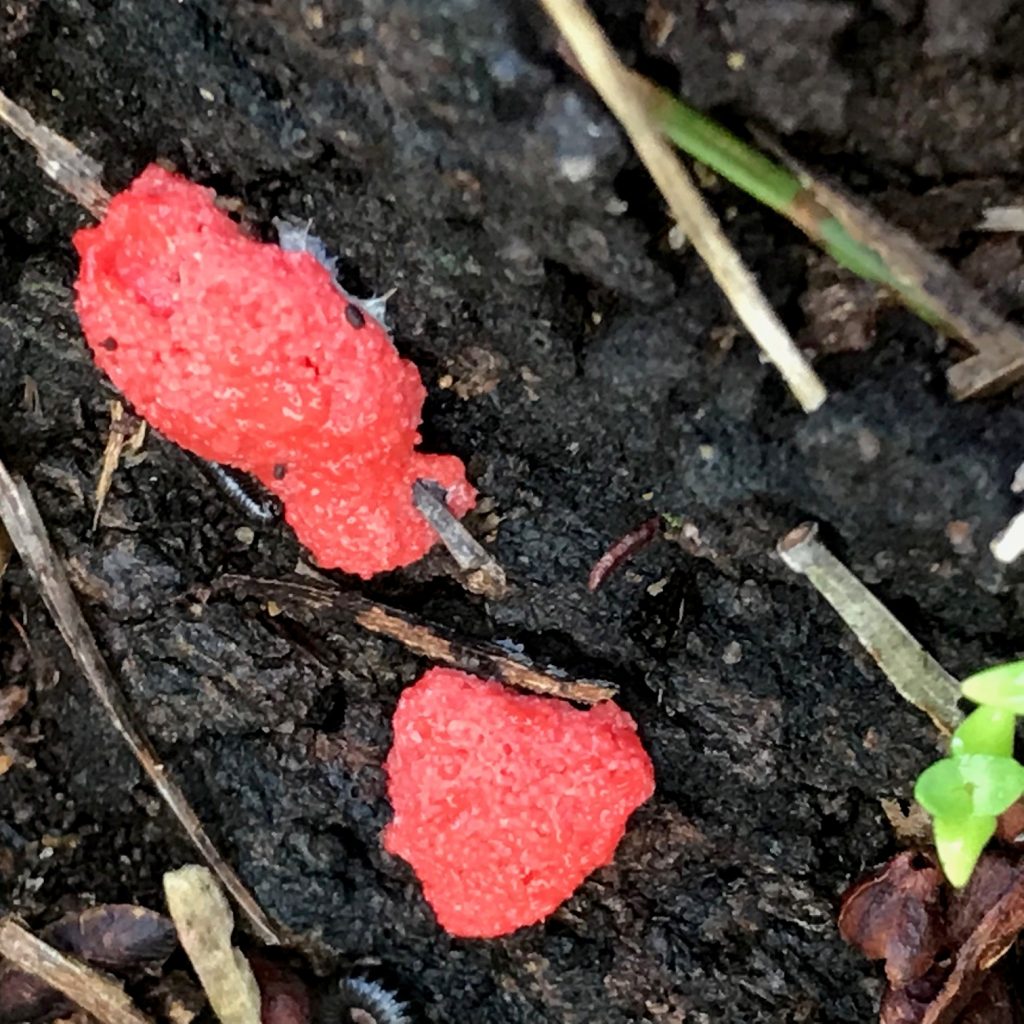
Strawberry Slime Mould (Tubifera ferruginosa) Helen Burkin
Due to the windy weather there were very few birds on the lake. Only three species were observed: Pacific Black Duck (Anas superciliosa), Eurasian Coot (Fulica atra) and Australasian Grebe (Tachybaptus novaehollandiae).
GOLLY, we were lucky: rain before and after we walked but not during.
Don Poynton

